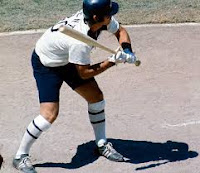Colin Cowherd recently had a list of his least favorite uniforms of all time, but the list included some baseball uniforms that most definitely did not belong on that type of list. With that, here are five of my favorite uniforms of the past that are objectively pretty ugly, but also the best.
Number One: The Padres' Mustard Yellows
A lot of people say that this uniform is one of the grossest in baseball history, but it's a very nice reminder for Padres fans, as they actually made it to their first World Series in franchise history in 1984 while wearing these condiment-themed uniforms. Couple the mustard yellow with the brown and orange and you have yourself one of the most "throwback-iest" throwbacks in baseball history.
Number Two: The Astros' Rainbow Look
I actually have zero problem with these 1975-1986 jerseys. I think they're very unique and were a major statement during a time when fashion itself was changing across the United States. When the current Astros wear the rainbows, I always smile a little.
Number Three: The Shorts Experiment
The White Sox wore shorts and collared shirts during games in the middle of August in 1976, thanks to the genius mind of their always-creative owner, Bill Veeck. However, after the ChiSox realized they weren't playing soccer, they switched back to the standard pants look.
Ok, so this isn't really a retro uniform, but it's still amazing. Because the Rays didn't debut until 1998, they never wore one of those funky uniforms of the latter half of the 20th century. This inspired the Rays to create fake throwbacks, an amazing marketing idea for a team that lacks in attendance.
This should just be their regular uniforms. Coupled with the glove logo, which conveniently is made up of an "M" and a "B," this uniform is one of the classiest of the famed powder blue uniforms of about 40-50 years ago. Please, Milwaukee, bring back this awesome look as the default uniform.







